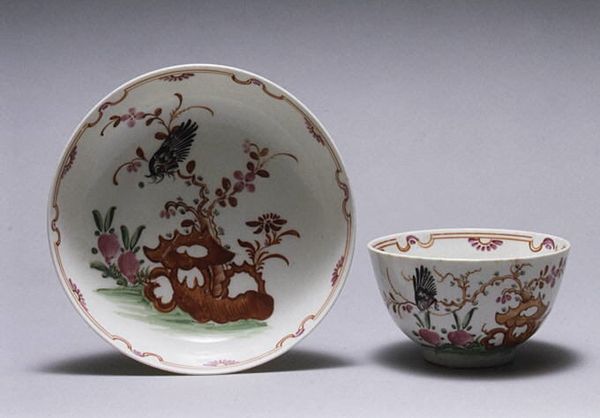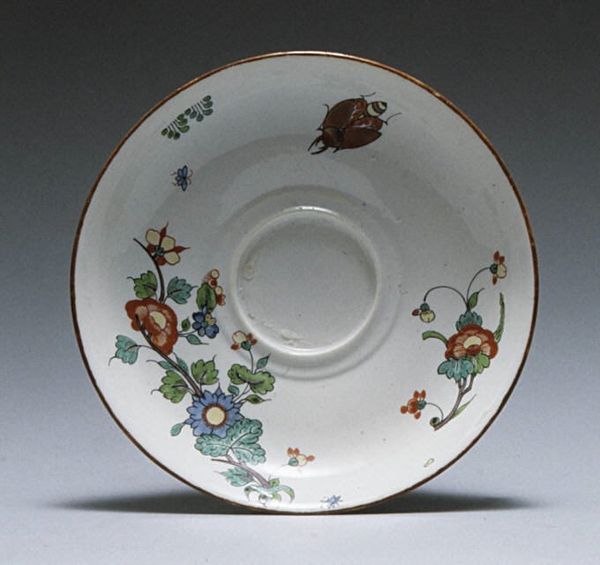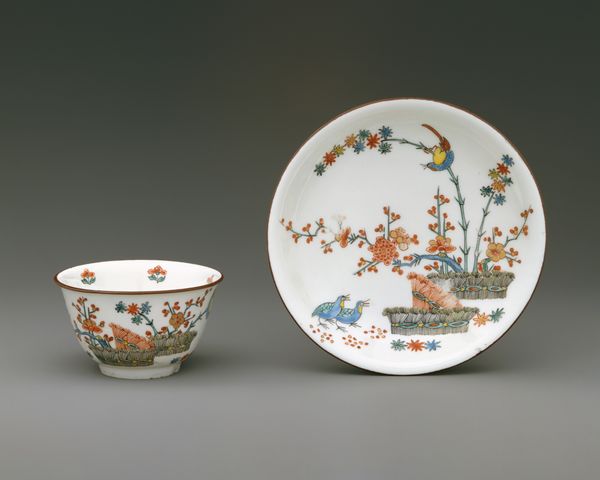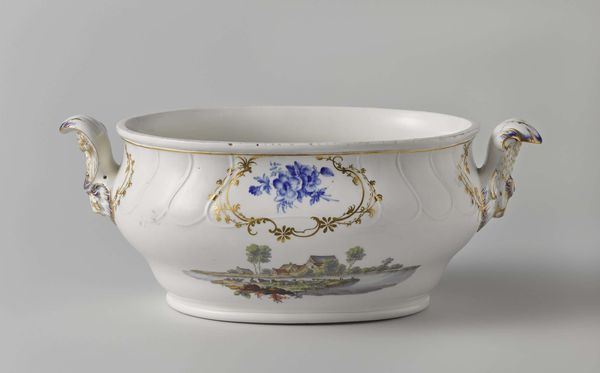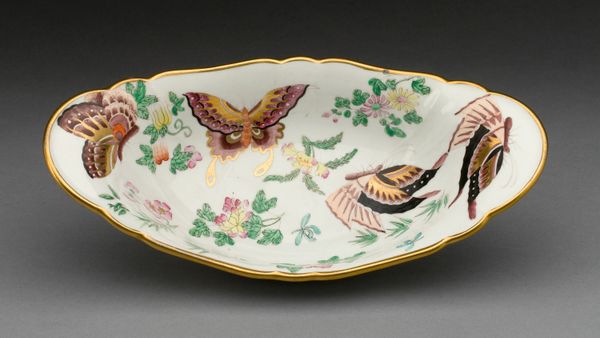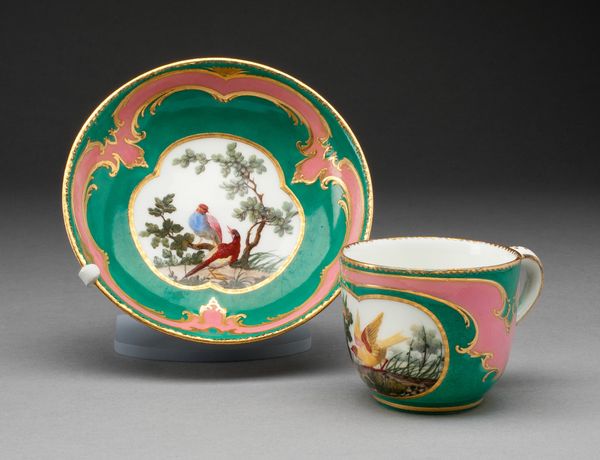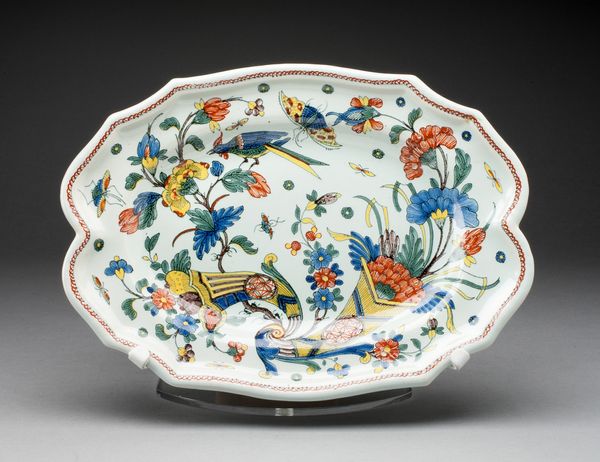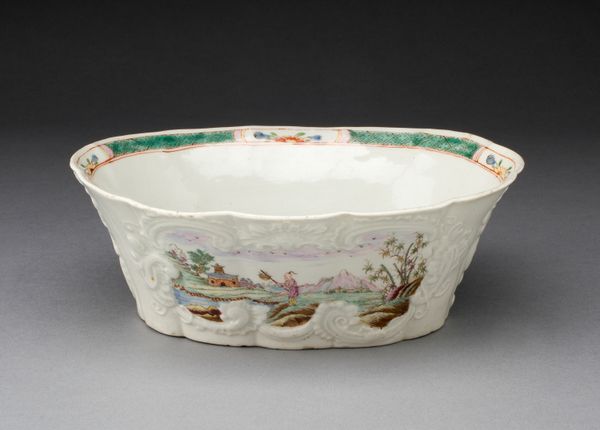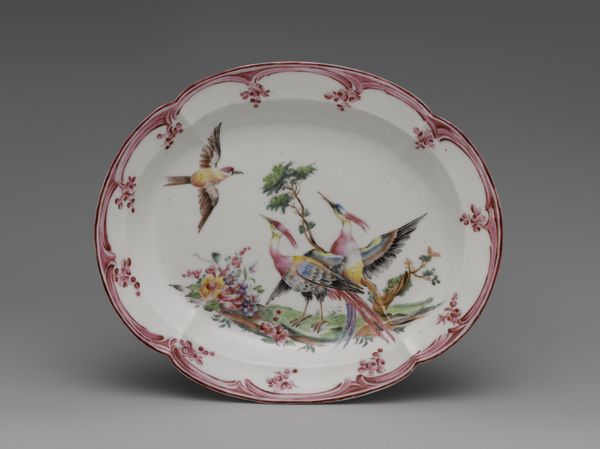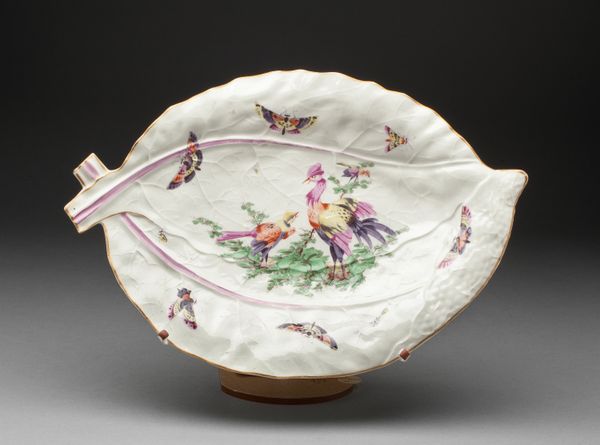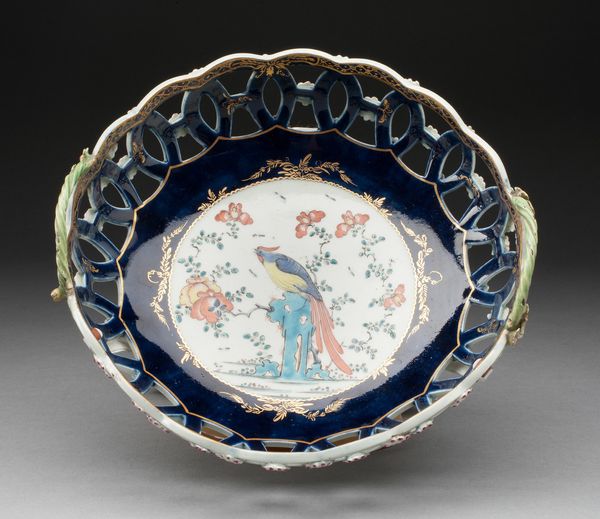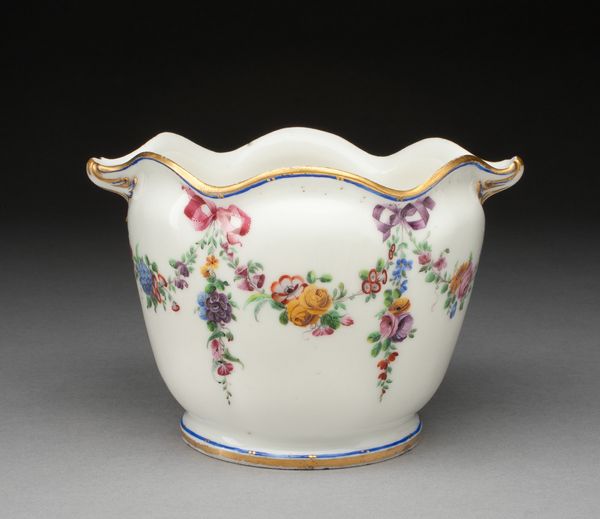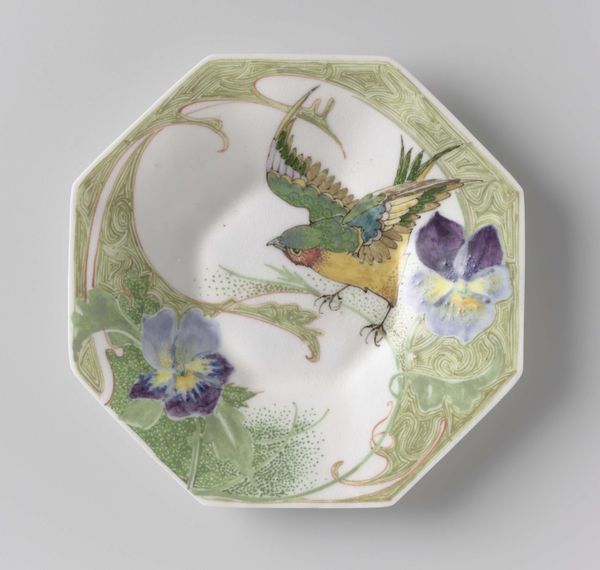
Cup (part of a service) 1765 - 1775
0:00
0:00
ceramic, porcelain, sculpture
#
ceramic
#
bird
#
flower
#
porcelain
#
sculpture
#
decorative-art
Dimensions: 2 × 2 7/8 in. (5.1 × 7.3 cm)
Copyright: Public Domain
Editor: We’re looking at a porcelain cup from a larger service, made between 1765 and 1775 by the Frankenthal Porcelain Manufactory. It’s decorated with delicate images of birds and flowers. I find its elegance captivating. What strikes you about this piece? Curator: I see the echo of entire cultural narratives whispered in its decoration. Notice the careful placement of the birds. Perched amidst the stylized flowers, they evoke a sense of harmony and natural order prized during the Enlightenment. How do these birds, these floral motifs, speak to the artistic trends of the time? Editor: I guess I hadn’t thought about it beyond just pretty pictures. The style does feel…classic. Almost like something out of a fable. Curator: Exactly. These weren’t simply aesthetic choices. Birds, in particular, often symbolized freedom, nature, and even the soul in 18th-century art and literature. The flowers could represent fleeting beauty, love, and renewal. In what ways do these traditional symbols contribute to a narrative about class and ownership? Editor: Hmm… Maybe because only the wealthy could afford something so delicate and detailed, it spoke to their appreciation for the finer things in life, their leisure, and their cultivation of beauty? Curator: Precisely. These weren't merely cups; they were status symbols. By understanding the iconography, we unveil the intricate social codes and aspirations of the era. Editor: I never realized a teacup could hold so many layers of meaning! Looking at it now, I see how each element contributes to a larger story about wealth, taste, and cultural values. Curator: Indeed. Each carefully chosen symbol is a window into a world of beliefs and values long past. It prompts us to ponder the role of beauty in cultural memory and continuity.
Comments
No comments
Be the first to comment and join the conversation on the ultimate creative platform.
